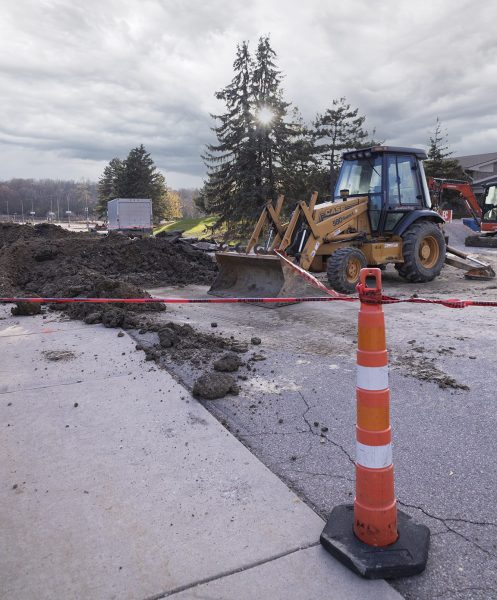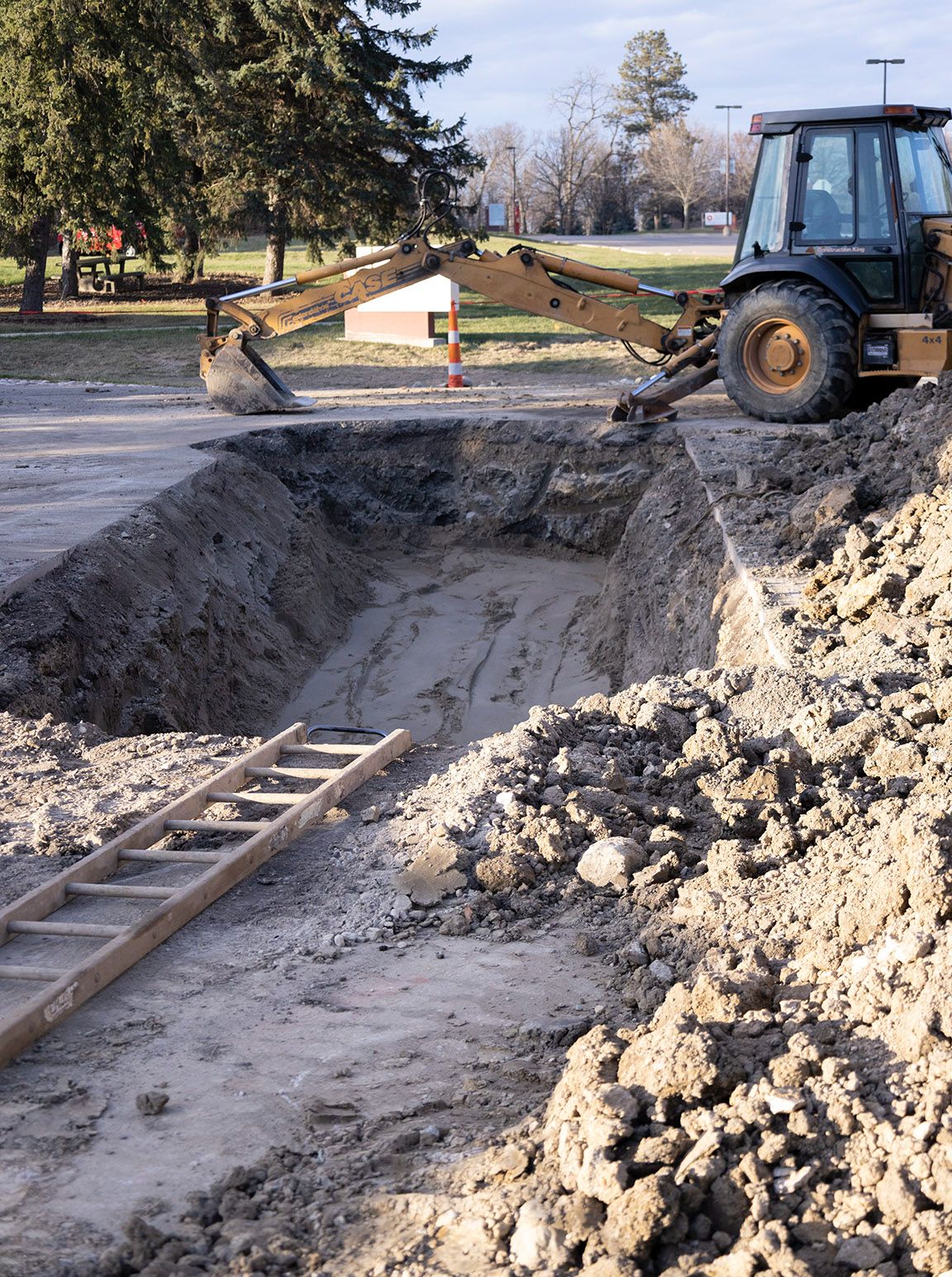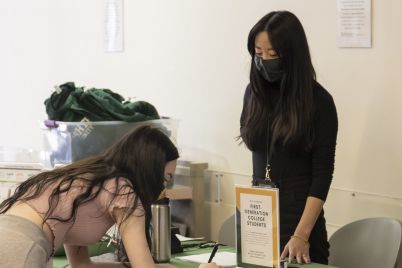
The aftermath after two days of repairing the school’s sanitary drain system. Paula Farmer | Washtenaw Voice.
By Willow Symonds
Staff Writer
Biology lecturer David Wooten plans to use a recent sewage water leakage as a teaching tool.
Instead of bringing the outside world into the classroom, he takes his classes into the outside world. To support his lessons on field biology, including aquatic organisms, ecology, and conservation, he teaches his students by the two ponds near the Gundar Myran building.
While these connected ponds support local wildlife, their purpose is to be a stormwater retention system. This means they collect stormwater runoff, like a drain, to keep it away from campus.

A giant hole left from construction work to fix the sewage leak. Paula Farmer | Washtenaw Voice.
However, on the afternoon of Oct. 26, a different substance than usual entered the ponds. A waste pipe burst, releasing between 3,000-4,000 gallons of sewage. According to vice president of facilities development and operations, Jim Becsey, this section of pipe handles all the sanitary drainage from buildings on campus, south of Huron River Drive. Administrators sent everyone home and closed campus for the following day. Under federal occupational, safety and health laws, public buildings cannot be opened without functioning water and wastewater systems. This would be the first of three campus closures related to the waste pipe.
According to Wooten, aquatic vegetation can have a hard time adjusting when exposed to foreign liquids in large quantities.
“Sewer run-off … can contain microorganisms harmful to people and wildlife,” Wooten explained over email. “[This] can cause algal and bacterial blooms that deplete the ponds of oxygen, kill fish and aquatic invertebrates, and release toxins that can even harm larger animals like birds and mammals.”
He believes this sets up an important conversation about hard-surface run-off (chemicals spills on parking lots, etc., flowing into grass and water) and its indirect pollution, a topic many people know little about.
He also stressed the importance of natural buffer habitats around bodies of water, such as ponds, lakes, and streams. Several years ago, Wooten and other faculty members dug bioswales between the WCC parking lots and the ponds. Bioswales are shallow crevices landscaped into the ground, typically planted with grass and other vegetation to match their environment. They act like natural sponges and absorb harmful chemical spills.
Even with the bioswales, the artificial retention ponds are frequently exposed to chemical run-off from the parking lots. These include leaking oil, anti-freeze, salt, and anything else spilled onto pavements.
“The sewage water leak is unfortunate and may have some negative effects on the pond ecosystem,” Wooten said. “We’re not sure if this will happen in our ponds as a result of the spill, but we’ll keep monitoring them and look for signs of stress.”
LeFort said in an email that the ponds’ water discharges into Swift Run Creek, which runs from west of campus down to Pittsfield Township.
Wooten described nature as, “adaptive and resilient,” and explained that, “while the sewage leak may have some short-term negative effects, overall, the ponds and the wildlife … will survive and persist.”
Then on Nov. 7, the facilities department identified a sanitary drain line leak. Sewage once again spilled into the ponds, then discharged into Swift Creek Run. Administrators closed campus that evening, this time for two days.
Media relations director Fran LeFort said over email that facilities department members identified the second leak, “around 4:30 p.m. on Monday, November 7. The line was shut off and the leak contained by 7:20 p.m. WCC completed a ‘Report of Discharge’ … and also notified the Washtenaw County Health Department.”
According to Becsey, the two leaks were in different sections of the sanitary pipe system. When they made the first repair, they felt confident the system had many years left. The pipe was installed in 1968, and the pipes used in WCC’s sanitary drain system typically have a lifespan of 70-80 years. However, when the second leak happened, they realized the best long term solution is to replace the entire sanitary drainage system.


